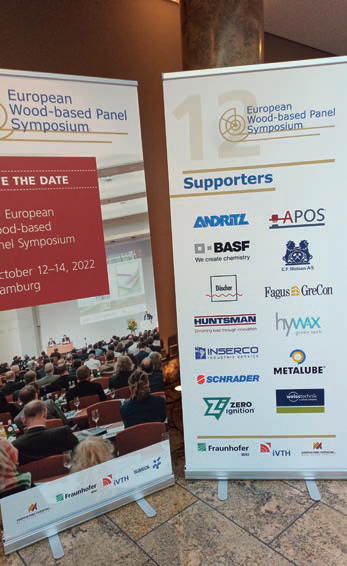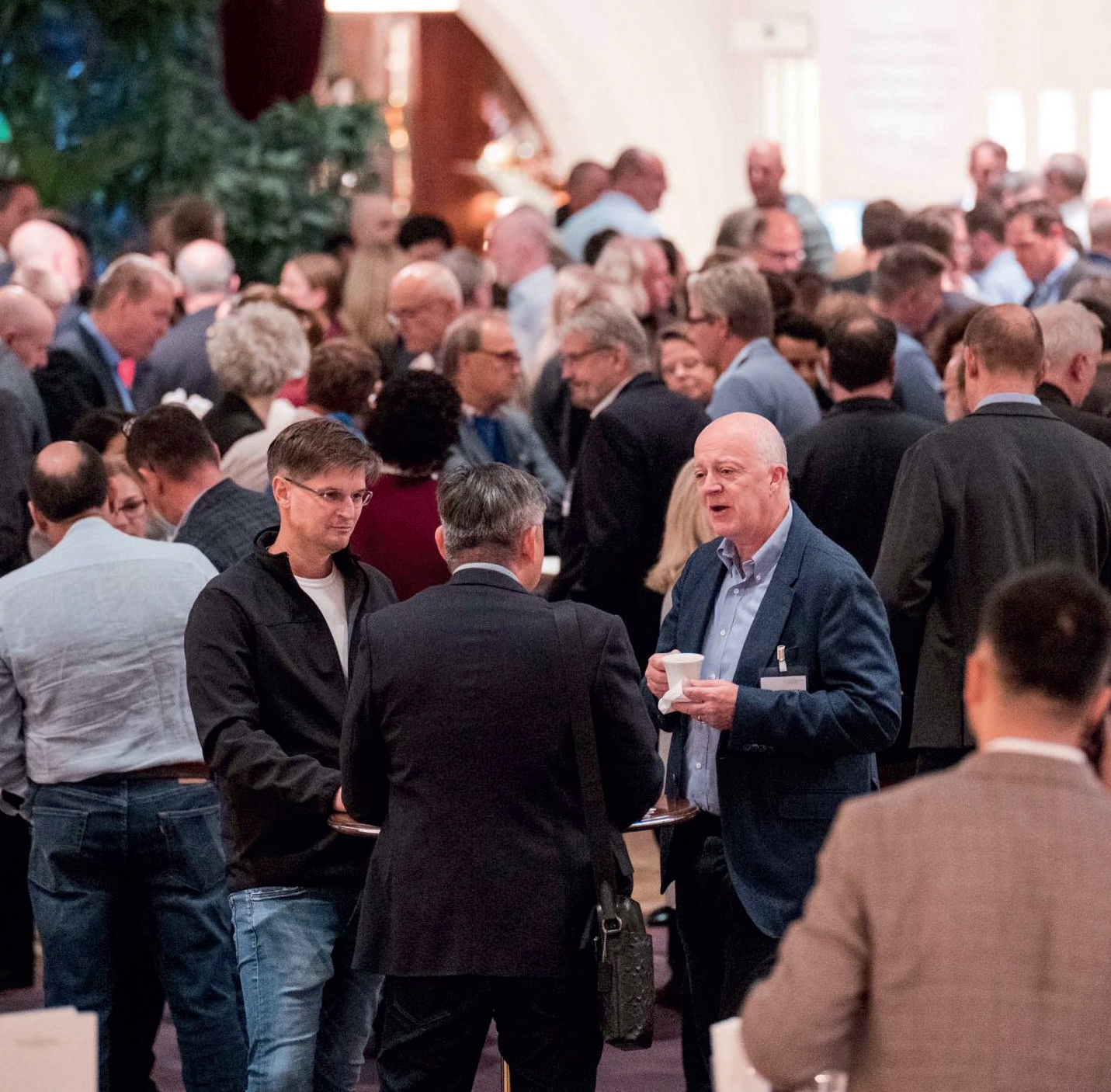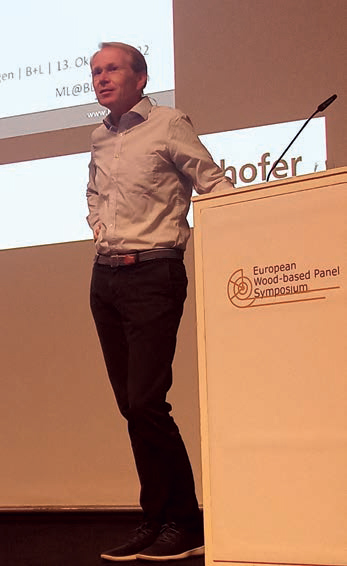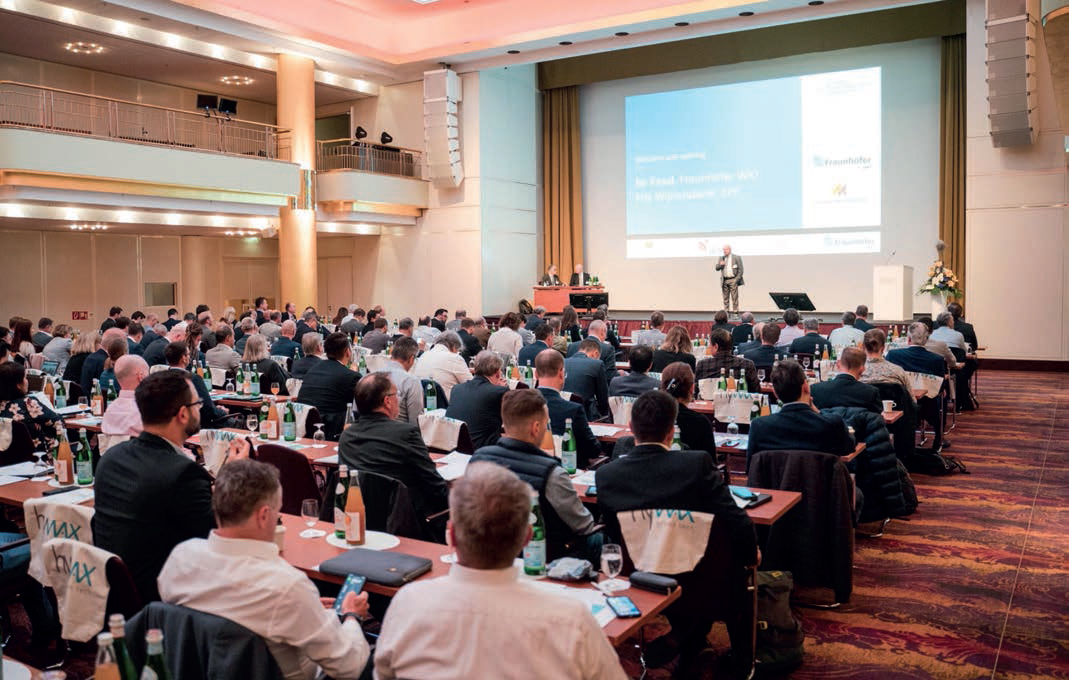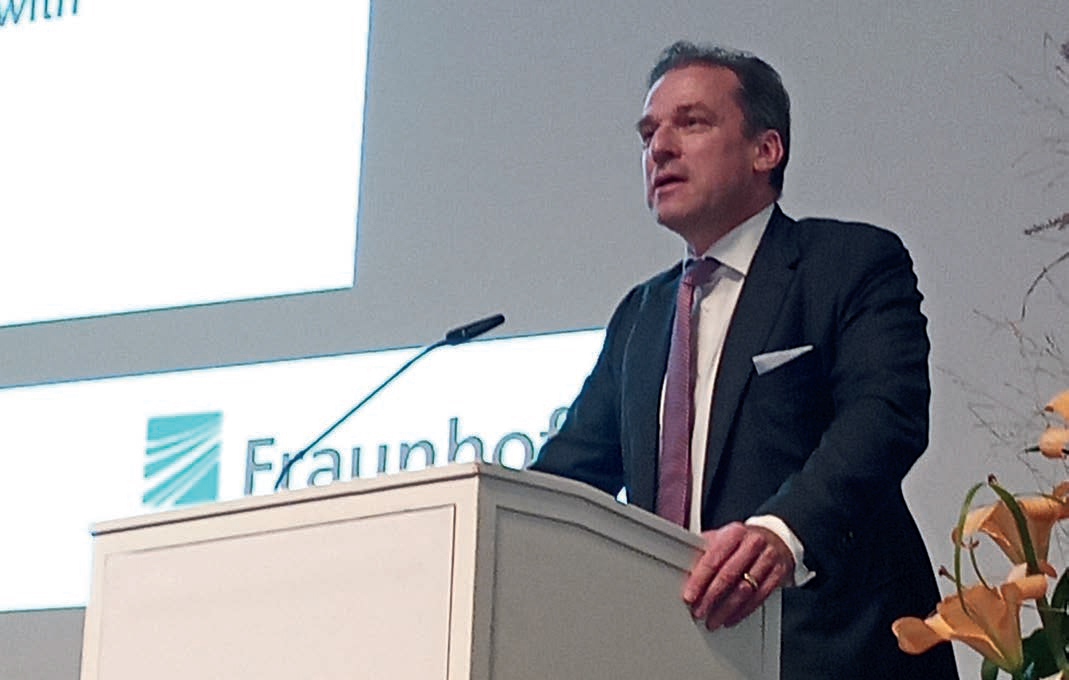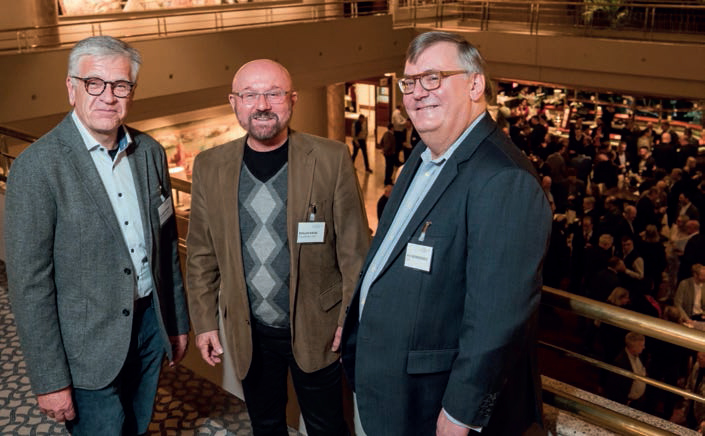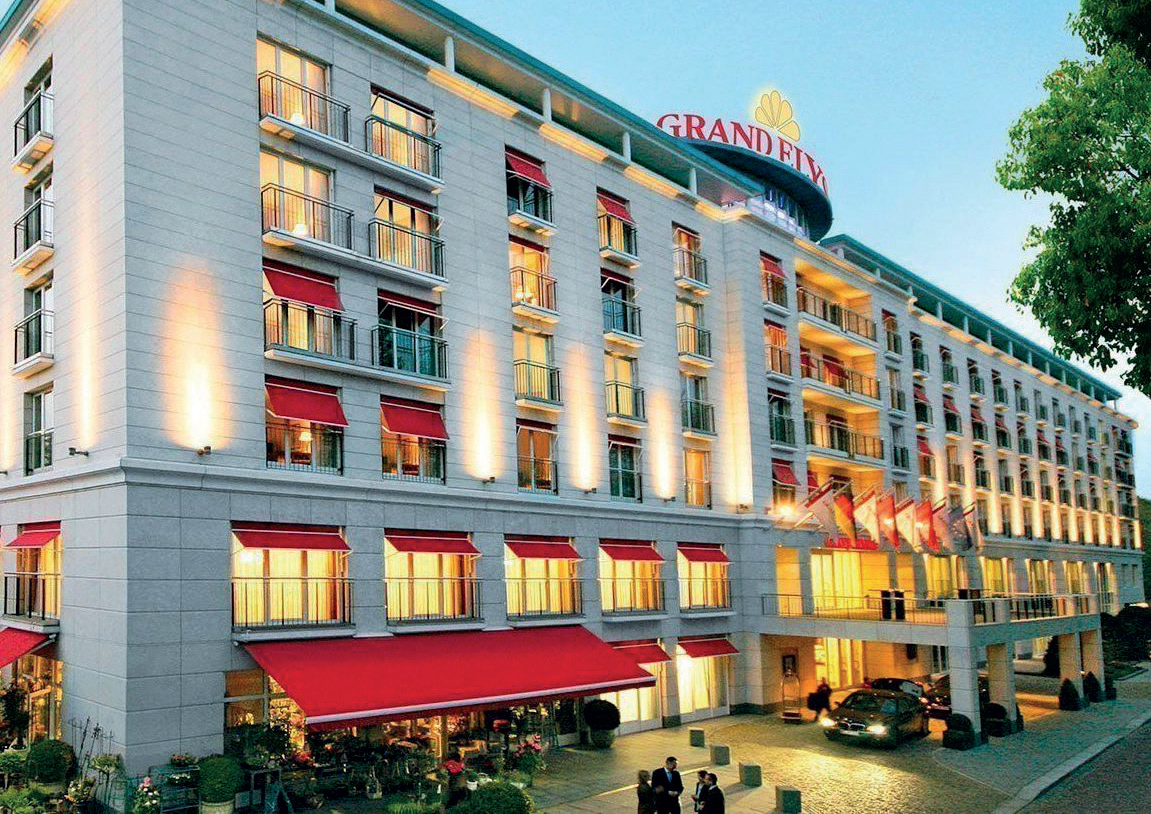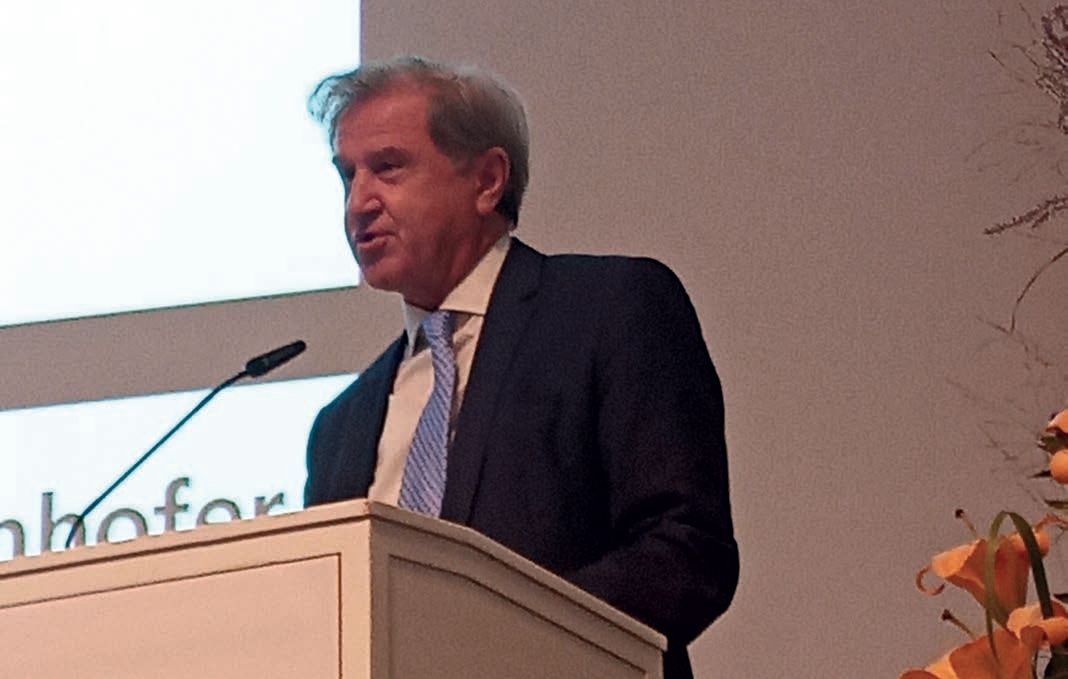Symposium charts changing markets
30 November 2022Panels manufacturers from across the world gathered in Hamburg for the 12th European Wood-based Panels Symposium, hearing the latest economic forecasts and technical updates for the industry. WBPI’s Stephen Powney was there to bring this report.
To say that delegates at the first European Wood-based Panels Symposium to be held for four years were keen to meet together and learn about where global markets are headed is an understatement.
More than 300 delegates turned out for the October 12-14 event at the Grand Elysée Hotel in Hamburg organised by the European Panel Federation and the Fraunhofer Institute for Wood Research WKI.
Representatives travelled from Norway, Turkey, the US, Canada, Finland, Sweden, Brazil, Chile, Korea, Japan, Singapore, Latvia, the Netherlands, France, Greece, Hungary, Poland, Italy, Spain, the UK, Ireland, Switzerland, Belgium and Austria.
Wood-based panel manufacturers represented included AGT, Homanit, Berneck, Sonae Arauco, MEDITE SMARTPLY, Kastamonu Entegre, Swiss Krono, Unilin, Finsa, Rheinspan, Japan Novopan Industrial Co, IKEA Industry, Fundermax, NODA Corporation, Egger, Dongwha, Latvijas Finieris, Fantoni, Pfleiderer, Kronospan, Steico and Fibreboard GmbH.
Leading suppliers from the machinery and chemicals sectors were also in attendance, with Hywax again sponsoring a gala event evening.
They all gathered at a time of great challenges, changing market conditions and uncertainty for the European panels sector.
Opening presenter Martin Brettenthaler, chairman of the European Panel Federation (EPF), set the tone for proceedings by tackling head on the current industry challenges, admitting the sector was facing a “perfect storm” due to soaring energy prices, heavy increases in resin prices and also increased wood raw material costs because of less timber being exported from Belarus and Russia.
A ”complicated” winter was ahead, he admitted.
The war in Ukraine, he added, was a “game-changer” for the entire industry in exacerbating these impacts, though he said this was not all a fault of the conflict.
Mr Brettenthaler criticised the German government’s heavily green energy focused policies (so-called “Energiewende”) over recent years as causing an acceleration of the energy crisis facing the industry. Such policies, he said were “delusional”.
“The real issue is not the boycott on Russian gas but that there is no realistic substitute available for nuclear power and fossil fuels. We need to increase energy supply and use nuclear power and restart coal-fired power plants and instead of importing Canadian shale gas use our own.”
He shared statistics with delegates showing how the cost of European MDF production had doubled since 2019.
“Demand for our products is going down with dramatic speed,” he added, explaining that part of this was due to the Covid effect having pulled demand forward. He predicted a major economic downturn in the next 6-12 months but a sharp rebound in a V-shaped curve.
Despite the bleak short-term picture, Mr Brettenthaler remained optimistic for the future of the wood-based panels sector.
Mr Brettenthaler, who also heads up Swiss Krono as CEO, shared his own personal experience of the conflict, with Swiss Krono operating wood-based panels plants in Ukraine and Russia.
The multiple challenges he said had caused a “dire situation” for plants in Ukraine and Russia.
Swiss Krono has two plants in western Ukraine, which re-opened in May and currently have a 75-80% capacity utilisation rate.
Mr Brettenthaler said OSB produced in Ukraine was currently finding a sad application area – covering window openings which have been war damaged.
“Ukraine was already a complicated country before, but the way they are dealing with the situation is incredible.”
Beyond Ukraine, Mr Brettenthaler said if energy prices stayed high then costs would have to be passed onto customers. And he believes the biggest cost increases were yet to come.
He added that the pressures could mean other parts of the world being targeted as an alternative for industrial investments, with a de-industrialisation possibly being seen in Europe.
The EPF proposed mitigation measures in June this year to European authorities, including securing the gas supply, mobilising more wood and more material use by cascading the use of wood.
FURNITURE SECTOR FACING DOWNTURN
The furniture industry is a key customer sector for the panels industry and Edi Snaidero, president of the European Furniture Industries Confederation (EFIC), gave delegates a rundown of the latest market situation.
The European furniture industry employs about one million employees, has a €100bn turnover and makes up 25% of world furniture production.
Mr Snaidero said the last few years had been characterised by incredible demand but also disruption to supply chains and challenges in raw materials and price increases due to the pandemic and more lately the war in Ukraine.
“The coronavirus crisis was very good for the industry as it brought new focus on homes and indoors,” said Mr Snaidero.
The European furniture sector, he added, had performed 15% better in 2021 compared to the pre-pandemic year of 2019.
“The first half of 2022 saw another 15% increase, then after June the situation worsened.”
Major players in the furniture industries were projecting a 30-50% decline in business for the second half of 2022, he revealed.
“Ukraine halted recovery and exacerbated supply chain difficulties and uncertainties to plan ahead.”
Mr Snaidero said multiple issues were now facing the European furniture industries including shortage of raw materials, increase in energy prices impacting production costs and also the price of furniture components, all leading to an increase in furniture retail prices.
The result is a strong slowdown of the market with demand decreasing especially in low and middle-end segments in Europe since June 2022.
The prediction for 2023 is raw material procurement difficulties to persist and further price rises are expected.
“Nobody knows what will be next,” he added, “but there will be a strong decline in market demand.”
In terms of wood availability, Mr Snaidero flagged up oak as having the largest difficulties, but supply problems with semifinished wood-based products were also being reported.
Mitigation measures needed included: secure, stable and affordable energy supplies, secure raw material availability and reducing dependencies.
A recent EFIC position paper outlined how collaboration with supply chain partners was key and that better integration as well as the circular economy could lead to more resilient supply chains and new business opportunities.
CONSTRUCTION SECTOR
The construction sector is also a major user of wood-based panels. This topic was covered by Martin Langen, of B+L Market Data GmbH, who specialises in construction, housing and real estate consultancy.
He told delegates that other parts of the construction sector, including the concrete and steel industries, were “envious” of the wood product industries. But he warned the panels sector not to go on the offensive against them, otherwise they would retaliate.
He said the wood industries should not underestimate the concrete sector and efforts to publish papers attacking it would face reverse action.
On the real estate front, Mr Langen observed that estate agents were “completely dead” at the moment, which will have an impact on the construction and furniture markets.
“When a building is sold then that is a moment when renovations and improvements are made,” he said. “If there are fewer moves then less furniture is bought.”
In terms of construction forecasts, Mr Langen did not agree with some heavily optimistic forecasts but said building detached housing was a huge problem currently. However, he argued that housebuilding progress could still be found even in countries with high inflation rates, referencing Turkey as an example.
He predicted poor conditions for the private new construction market, with a massive shift towards renovations in 2025-2030.
Mr Langen hinted he was not as pessimistic about economic prospects globally as some commentators and pointed to the IMF GDP Forecasts for 2023 (published in October).
“Do not look at the newspapers!” he said. “What they say does not add up. The headlines do not match up with the numbers.”
While believing the global figure of +2.7% for 2023 (IMF GDP forecast) was probably too high, he said country figures were still largely in positive territory. France is +0.7%, the US +1.1%, Germany +0.3% and the UK +0.3%, while China and India are not impacted, with growth of +4.1% and +6.1% respectively.
Container prices have also dropped, registering €4,700 in September 2022, while timber prices that soared in Q2 and Q3, 2021 have eased back.
Mr Langen also referenced the wide differences in construction costs, depending on region. Construction costs in the Munich area are double that of some other areas of Germany.
He said dwelling permits issued in Germany were reducing, particularly for single family houses. He described the UK as a stable housing market.
PARTICLEBOARD AND MDF DEMAND DROP
Dr Goran Schmidt, of Afry Consulting, tackled how the panel industry can cope with changing sourcing conditions and new regulations. He said a multitude of challenges have been disrupting the European market over the past two years, creating an uncertain wood products market.
Afry is predicting that wood-based panels demand would dip 10% in 2022 and further decline in 2023, before returning to 2019 levels in 2024/25. It predicts European MDF/ HDF/THDF demand to reduce by 1.8 million m3 in 2022 and by 1.6 million m3 in 2023, while particleboard is estimated to fall by 3.9 million m3 in 2022 and by 3.5 million m3 in 2023.
Panel product prices have shown strong growth since Q1, 2021 due to a strong construction sector and raw material costs.
Over the longer period from Q3, 2019 to 2022 the price hike for PB was 120%, while for MDF it was 130%.
Dr Schmidt warned that several current EU policies relating to forest utilisation had the potential to reduce wood raw material supply. The EU Biodiversity Strategy, in particular, could reduce the supply potential in 2030 by 17 million m3.
And the component parts of a woodbased panel have seen great cost inflation, with methanol prices jumping 35% between August 2021 and August 2022. During the same period wood chips prices rocketed 395%, pulp rose 20% and melamine was up by 150%.
As well as the geo-political factors and supply chain disruptions, the wood chip price has been impacted by high demand in the bio-energy and pellet sectors. Rising gas prices have led to inflation in methanol costs, while supply shortages and force majeure have impacted melamine development.
Dr Schmidt advised wood-based panels producers to optimise costs and diversify raw materials to lower their costs. This includes: alternative feedstocks, applying fillers, optimising resin and additive sourcing and process/product innovation.
“The coming years are going to be more challenging than the last five to seven years,” he concluded.
“Wood-based panels demand will reduce in 2022 and 2023. However, less product demand is not expected to notably release pressures on raw material prices and availability.”
